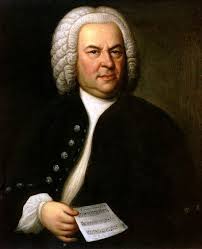Johann Sebastian Bach, a renowned German composer of the Baroque period, left an indelible mark on the world of classical music. With his exceptional talent and profound understanding of music theory, Bach created compositions that continue to captivate audiences to this day. In this blog post, we explore the 10 best songs by Johann Sebastian Bach, showcasing his genius and the enduring beauty of his works.
- “Toccata and Fugue in D minor” (BWV 565): Possibly one of Bach’s most recognizable compositions, the “Toccata and Fugue in D minor” is an organ masterpiece. Its hauntingly atmospheric opening followed by intricate and breathtaking fugue sections make it an unforgettable piece that showcases Bach’s extraordinary command over counterpoint.
- “Brandenburg Concerto No. 3” (BWV 1048): A gem from Bach’s collection of six Brandenburg Concertos, the third concerto is a vibrant and joyous composition. With its energetic interplay of strings and the delightful dialogue between violin and viola, it exemplifies Bach’s mastery of orchestration and his ability to create complex yet accessible melodies.
- “Jesu, Joy of Man’s Desiring” (BWV 147): Originally part of Bach’s larger work “Herz und Mund und Tat und Leben,” this chorale is a testament to Bach’s gift for weaving intricate harmonies into sublime melodies. Its serene beauty and profound spirituality have made it a beloved piece performed at weddings, religious ceremonies, and concerts worldwide.
- “Air on the G String” (from Orchestral Suite No. 3 in D major, BWV 1068): Elegant and introspective, the “Air on the G String” is one of Bach’s most famous instrumental pieces. Its gentle, flowing melody, accompanied by a delicate string ensemble, evokes a sense of tranquility and has become a symbol of timeless grace and elegance.
- “Goldberg Variations” (BWV 988): A monumental work for keyboard, the “Goldberg Variations” demonstrates Bach’s ingenuity and technical prowess. Consisting of an aria and thirty variations, this composition showcases Bach’s ability to create an astonishing range of moods and emotions while maintaining a sense of unity throughout.
- “St. Matthew Passion” (BWV 244): One of Bach’s most ambitious choral works, the “St. Matthew Passion” is a musical retelling of the Gospel narrative. Through its complex vocal and instrumental interplay, it conveys the profound emotions of the crucifixion and the redemptive power of faith. This composition stands as a pinnacle of Baroque vocal music.
- “Cello Suite No. 1 in G major” (BWV 1007): Bach’s suites for solo cello are a testament to his understanding of the instrument’s expressive capabilities. The first suite, in particular, is a showcase of the cello’s melodic and rhythmic possibilities. Its iconic Prelude, with its flowing arpeggios, is instantly recognizable and has become a staple in the cello repertoire.
- “Mass in B minor” (BWV 232): Considered one of Bach’s crowning achievements, the “Mass in B minor” is a grand-scale composition that unites various musical styles. From intricate fugues to serene chorales, this work displays Bach’s remarkable ability to fuse different forms and genres into a cohesive and spiritually uplifting masterpiece.
- “Violin Partita No. 2 in D minor” (BWV 1004): Featuring the famous “Chaconne,” the second partita for violin is a pinnacle of the solo violin repertoire. Its richly textured variations showcase Bach’s mastery of polyphony and his ability to create an entire musical world with a single instrument.
- “Prelude and Fugue in C major” (from “The Well-Tempered Clavier,” BWV 846): As the opening piece of Bach’s monumental collection, “The Well-Tempered Clavier,” the Prelude and Fugue in C major sets the stage for a journey through all major and minor keys. The prelude’s cascading arpeggios and the fugue’s intricate counterpoint reveal Bach’s genius as a composer and his profound understanding of harmony.
Conclusion:
Johann Sebastian Bach’s contributions to classical music are immeasurable, and these ten selected compositions offer a glimpse into his extraordinary genius. From intricate fugues to soul-stirring chorales, Bach’s music continues to inspire and move audiences centuries after its creation. As we appreciate the beauty and complexity of these masterpieces, we honor the enduring legacy of one of history’s greatest composers.


Comments are closed